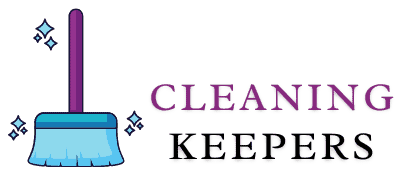Laminate flooring imitates the look of wood flooring. It may not be as durable as hardwood flooring, but it is durable enough to resist daily wear and tear.
Learn about the pros and cons of laminate flooring in the basement.
Laminate flooring is aesthetically pleasing, cost-effective, and environmentally friendly. However, it is prone to damage, scratches, chips, and peeling due to excessive exposure to moisture. Find out how to repair the water damage to laminate floors.
When your laminate flooring starts to peel, there is nothing to worry about as you can repair it without having to call a professional.
Keep reading to find different methods to repair the peeling laminate floors. These methods are easy to follow, and you can repair your floor with a few tools.
What Causes Laminate Floor Peeling?
Moisture is a major cause of peeling laminate floors, similar to issues covered in how to fix buckling in laminate floors. which is often caused by moisture. If you spill, do not let it sit for too long, and wipe it up immediately. Here’s how to remove scratches from wood floors, which can occur from spills and water damage.
Water accumulates layers of dirt and debris on the surface, which causes the wood finish to peel off.
When water is left to sit on the laminate floor, it seeps into the joints and causes them to stretch, wrap, and weaken the glue at the joints causing the boards to come apart. Also, humidity in the air can cause the laminate floor to peel.
You can prevent peeling by avoiding spilling water on the laminate flooring. If you spill, do not let it sit for too long, and wipe it up immediately.
How to Fix Peeling Laminate Floor?
Epoxy Gum or Glue
Consider how to repair scratches on hardwood floors as a comparison for dealing with laminate floors.
Glue works great when peeling is not too bad. It does not work well for extensive peeling. The peeling of the laminate floor starts from the corners. So, if you notice peeling, use epoxy gum or super glue to fix it.
Do not use the adhesive too much as it causes bulging in the laminate flooring, which is uncomfortable to walk on. Apply the glue underneath the peel with a matchstick or toothpick dipped in the adhesives. Then apply some pressure to get a strong bond under the peel to make it more effective.
Heat Gun
Explore more about how to fix buckling in laminate floors, which can also be treated with heat.
You can reverse the peeling edges of your laminate floor with a heat gun. However, make sure you wear protective gloves to avoid burns.
Direct heated air from a heat gun at the peeling area. The heat will evaporate the moisture in the wood, causing the peeling that the edges will return to their place. You can place a rug and put heavy objects on the top to hold the area in place until it glues back.
Sanding and Painting
Read about how to make a stagger pattern for laying laminate flooring to understand more on floor aesthetics.
If the peeling is too bad, gluing the laminate flooring will not work well. In this case, you will have to remove the peeling part. Sand off the floor area using fine-gritted sandpaper and paint it. Or you can replace the entire board.
Laminate Floor Repair Kit
The laminate floor repair kit comes with all the tools you need to repair damages to your laminate flooring, whether chipping, bulking, scratches, peeling, or scraping. You can find a suitable laminate floor repair kit from your local hardware, home improvement store, or online store. Make sure you buy a kit with a wide range of color options to find the burn-in stick that matches your floor.
Find out the color that is closest to your floor color and achieve the color by mixing different burn-in sticks by melting them. Fill in the damaged part of the floor with the sticks and wipe away the excess material. Let the patch dry. You can use a hairdryer on low settings to speed up the drying process. You can add several layers until you reach the perfect finish.
Hard Wax
Learn how to repair chipped laminate flooring for an alternate approach to dealing with floor damage.
Hard wax is quicker and easier to use than putty. It is ready to use once set, and there is no setting, drying, or curing time when working with it. Moreover, hard wax is stronger, and the repair will be more permanent than wood putty.
To repair laminate flooring with hard wax, clean the area that needs to be fixed and remove splinters and debris from the hole. Use a soldering iron to apply the wax. Use the color that matches your floor. Remove the extra wax with a spatula when it has cooled, and then level the surface. Hard wax works best for scratched laminate floors.
Wood Repair Putty
Wood putty is more helpful for large holes on the laminate floor. Repair putty is available in different colors, making it easy to find the same color as your laminate flooring. However, if you don’t find the matching wood putty, you can achieve the desired color by mixing two colors, or you can paint the patch.
You can easily the damaged area on the floor with wood putty and coat laminate floors. First, you will have to remove the wood splinters using a knife before you start filling the hole. Then clean the peeling area with a cleaning solvent before applying the wood putty with a putty knife.
Gently press the shallow layer of wood putty before it dries completely, and wipe off the excess putty with a putty knife.
Replace the Boards
Replacing the boards is the last resort when nothing else works, and peeling or chipping recurs simultaneously. Installing or replacing laminate boards is simple and easy, so you can do it without getting any help from professionals.
Make sure you have extra laminate planks from the previous floor installation; if not, find the same boards as your floor so that it doesn’t look odd when you install a new board.
Here is how you replace the boards of the laminate floor:
Step 1: Remove the Baseboards
The baseboards hold the laminate planks in place. It is at the corner of the wall. The planks are screwed to the baseboard and the underlayment. Remove these screws first, and then pull the boards out.
Step 2: Remove the Surrounding Planks
One of the best things about laminate boards is that they are easy to install and remove. You can remove the damaged planks easily and replace them with new ones. You don’t need a professional to do this job. Remove the surrounding planks to get to the board you want to change.
Step 3: Replace the Damaged Plank
Remove the damaged plank and place a new one in its place. Place the other removed planks back too and put the baseboard back.
How to Prevent Laminate Floor From Peeling?
With a little care and precaution, you can manage to prevent your laminate floorings from getting damaged and make them last longer. Here are a few tips to maintain your laminate floor and avoid peeling.
Avoid Sliding Furniture on the Floor
Dragging heavy furniture on wood or laminate floors can damage your floors. You can consider installing furniture pads if you move the furniture often.
Clean Regularly
Sweeping your laminate floor regularly will prevent the accumulation of dirt and dust, which can grind on the floor and damage it. Always use a broom with soft bristles to sweep your floor.
If you want to clean the floor with water, avoid using too much water and don’t let it sit on the floor too long. You can use a damp mop for more thorough cleaning.
Rugs
Placing rugs and floor mats at the entrance and other high-traffic areas will keep the debris and dirt from the shoes away. They will keep your house clean for a longer time and reduce the risk of damaging your floor.
Don’t Use Harsh Cleaning Products
Harsh and scouring detergents weaken the floor’s surface, which causes peeling and scraping. Use mild detergents that are safe for laminate floors. Also, read the manufacturer’s instructions to determine which cleaning solutions are recommended for your floor.
Avoid Water Spillage/Leakage or Clean Immediately
Here’s a guide on how to install laminate flooring in an RV with slide-outs, which might be prone to water spillage.
Almost all kinds of damage to the laminate floor start with excess moisture. Water can cause swelling and bubbling on the laminate floor. So, you must prevent water spills as much as you can; but when they occur, make sure you clean them immediately. Also, repair the leaking pipes, especially in the kitchen and bathrooms.


